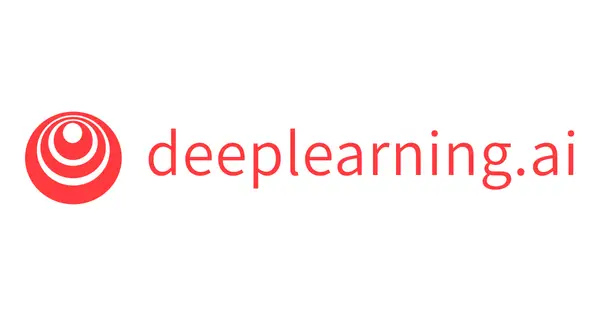
Hello Neuraspikers. I’m excited to inform you that deeplearning.ai featured Neuraspike a couple of months ago at the PIE and AI meetup in Kigali, Rwanda.
Before you play the conversation, be sure to follow Jean’s Linkedin and subscribe to his YouTube channel. He’s one of the event ambassadors for deeplearning.ai.
Here’s the video, along with the transcript for you below.
1) In your professional work, can you give one concrete example of applying AI (data science/ machine learning project) to an enterprise and how it worked?
Issue 1
That’s an a very good question. Currently, I work for 3Lite which falls under the construction sector. And I will shock you by saying the construction industry is lagging compared to many other industries in leveraging big data.
Currently, it is interesting today to work in data analytics and AI because not a lot of advancement have been made compared to other industries like the Autonomous industry, yet the construction industry is not like that.
What prevents the advance of big data is the data is siloed (isolated from others). Still, today, most of the data is siloed. Meaning the information is cumulative in structure which are not easy to integrate. This is because applications are designed to serve particular needs or functions.
For example, we have software for Planning, cost estimation, printing, managing people, client relationship management, all these different types of softwares. So these software evolved over the years, serving a particular function preventing integration together. So the combination is good.
How we tackle it
What we are working on at 3Lite is the integration of unstructured data with a lot of text generated and manually input text.
So much paper is created, so there is so much noise coming from reports, meetings, emails, and Text Analysis is at the core of what we do—so using Natural Language Processing (NLP) to segregate data and make it available for someone who wants to use it.
Other places we could apply Artificial Intelligence (AI) is in:
- AI Assistance at construction sites. Pretty much we’re seeing applications where we are having a camera that monitors the laborers at the construction site and if they are not wearing their helmets on, the software could easily flag it and report it to the system.
Another application of what we do at 3lite with text analysis is creating information dashboards. To process information and prepare dashboard, so users have hourly dashboards as compared to weekly dashboards.
Issue 2 – Generational issues
Newer generations as opposed to old generations. The older ones are still driving the construction industry, so leveraging data is all manual input. So all those forms are either filled manually and there is no automatic shared data.
The way that the younger generation expects things to move forward is different. The younger ones are not satisfied with the way things are moving forward, so manual hard work, there is no recent advancement, etc. The use of AI is to retain the talent of younger generations. So out of 100, over five will have exploited and gone somewhere else because it’s still behind. So in order to keep the top 5 smart working people by bringing the construction industry up to standard.
There have been slow technological advancements in the last 100 years, which has definitely impacted the construction industry negatively.
For example, the Empire State Building in New York, when there was no internet, cell phones, emails, only radio communication and it was developed in 13 months, and now it could take up to 2-3 years to complete such a building. We can see that this is definitely not good and something needs to be done.
Most of the construction data look backward to see what went wrong—analyzing historical data. How do we manage, look forward, anticipate risk, predict certain events, and improve construction sites?
Artificial intelligence in the construction industry is primarily developing the availability to leverage all their heterogeneous information to solve problems, make the right decision, and retain talents.
2) In your opinion, which corporate departments will probably be the most impacted by Artificial Intelligence? (Marketing, Customer Service, Accounting and Finance, Production, Sales, health, agriculture).
All the industries mentioned will be impacted positively from A.I in one way or the order. I wouldn’t say that any of these specifically will be the most impacted.
3) What advice would you give to people looking to transition in AI, DS, and ML?
- Start learning right now. It doesn’t matter if you’re older or younger, you know. There is absolutely nothing like being too old or not. As long as you have breath, it’s never too late. It’s only when you’re dead, that’s when it’s too late.
- Practice for 20 hours a week. If you are occupied with other priorities such as kids, practice every day, even if it’s only 30 minutes a day— that sums up to 3.5h a week, 14h a month, 168h a year.
- Read technical blog tutorials out there, books, and courses, and once you start you should finish it. If you are stuck, someone probably already had that problem, and there is a massive community of developers available online, like StackOverflow, GitHub, and others.
4) What actionable plans, tactics, and strategies would you share with the audience on how to advance and excel in this highly dynamic and evolving data world while building strong and impressive portfolios?
- Deconstruct what you want to do, take it & break it down and solve it bit by bit.
- Learn to self correct yourself. Let’s say you want to start your career. You want to read 20 books before you start implementing. I will say learn just enough to start practicing, not until you complete it.
- Remove barriers to practice, such as distractions like social media and television.
To be notified when this next blog post goes live, be sure to enter your email address in the form!


